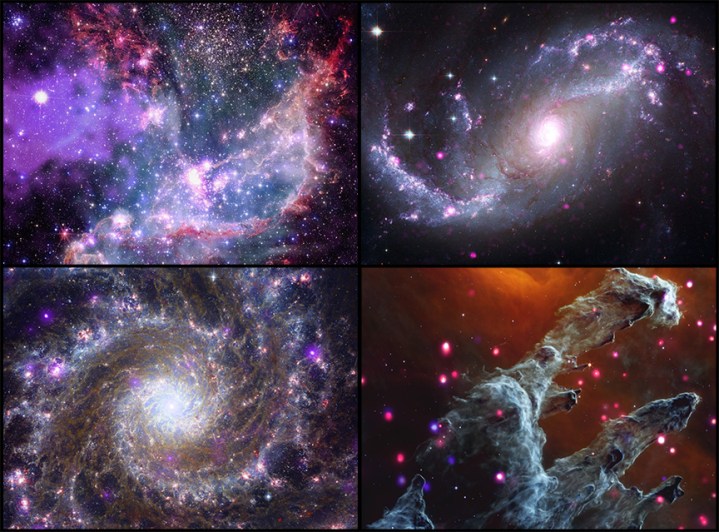Since beginning science operations last summer, the James Webb Space Telescope has been providing a plethora of beautiful images of space. Now, NASA has shared a new view of some of those images, by combining infrared data from Webb with X-ray data from the Chandra X-Ray Observatory.
The four new images show a variety of cosmic objects like galaxies and nebulae, bringing together observations from different wavelengths to show features that wouldn’t be visible in a single wavelength. As well as Webb and Chandra, the images also incorporate data from the Hubble Space Telescope, which operates in the visible light wavelength, the retired Spitzer Space Telescope which looked in the infrared, and the European Space Agency’s XMM-Newton X-ray instrument and the European Southern Observatory’s New Technology Telescope, which also operates in the visible wavelength.

The four images shown above are available in higher resolution on the Chandra X-Ray Observatory website. The top left image is a star cluster called NGC 346, located in a satellite galaxy of the Milky Way called the Small Magellanic Cloud. The infrared data from Webb shows the clouds of dust and gas which are used in the formation of stars and planets. The purple haze is from Chandra data, showing the aftermath of a supernova when a massive star reached the end of its life and exploded, sending out energy and light. Some of the youngest and brightest stars are also giving off X-rays, making them shine in the Chandra view.
Top right is the spiral galaxy NGC 1672, with the stars spread through the galaxy but concentrated in a bar formation across the center. The Chandra data shows purple dots spread around the galaxy, which represent extremely dense objects like neutron stars and black holes. These objects glow in the X-ray wavelength because they pull material away from nearby stars, and as this material approaches the objects it rubs together and heats up due to friction. As this matter reaches temperatures of up to millions of degrees, it gives off X-rays that telescopes like Chandra can detect.
On the bottom row is the spiral galaxy Messier 74 and the famous Eagle Nebula. M74 appears face-on from Earth, which gives a great view of its structure, with Webb data showing the swirling dust and gas and the Chandra data picking out particularly active stars which are giving off X-ray energy. Similarly, in the image of the Eagle Nebula, Webb mapped out the clouds of dust and Chandra picks out the points of light where bright young stars are glowing.
A further set of images combining Webb and Chandra was released last year if you want to see more of these stunning views.



